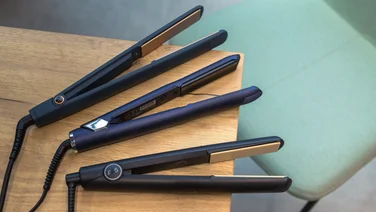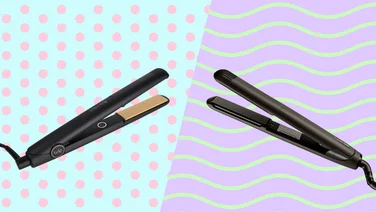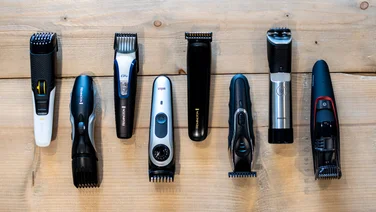To help us provide you with free impartial advice, we may earn a commission if you buy through links on our site. Learn more

A shaving routine is a very personal thing. While some men enjoy the closeness and convenience of a wet shave, others might be repulsed at the thought of leaving the house with baby-smooth jowls.
Both manual razors and electric shavers have their benefits and their drawbacks: while one method might be better suited to those with skin that is sensitive or prone to outbreaks, the other is arguably faster and more convenient for time-strapped individuals.
Assuming that you are shaving to achieve a completely clean finish, rather than trimming bushier beards or cultivating that three-day stubble look, we have pitched the modern electric shaver against the humble razor to weigh up their pros and cons.
To help us reach our conclusions, we have enlisted the help of a couple of experts. Dr Jonathan Kentley is a consultant dermatologist and British Skin Foundation spokesperson, while Miles Wood-Smith is master barber and creative director at Murdock London.
Accuracy
Unless you have the toughest, most resilient skin on the planet, wet shaving with a razor typically requires a shaving foam or lubricant of some kind. As well as helping reduce irritation, this also serves as a handy visual guide to the areas that have been shaven.
For this reason, it’s a lot easier to miss patches with an electric shaver, especially in hard-to-reach areas such as under the neck, around the top lip and underneath the jawline (unless, of course, you are using a shaving foam with your electric shaver, too).
Some of the best brands for male grooming, such as Braun, Philips and Panasonic, aim to reduce the chances of missing patches with efficient cutting blades that slice hair down to the skin on a single pass. Similarly, some also offer a pop-up trimmer that helps tackle trickier spots.
The Manscaped Chairman Pro, for instance, even offers a built-in LED light that illuminates the area of your face that you are about to shave, to ensure you can see the most commonly missed patches of skin.
Mile Wood-Smith explains: “Electric shavers have become a lot more accurate in recent years, with some sporting sensors that adapt the motor output to hair thickness and other technologies that move with the contours of the face.”
However, it’s difficult to deny the accuracy of an old fashioned razor, particularly given the gulf in price between the two.
Closeness of shave
“Shaving with a razor not only cuts the facial hair right down to the skin, it also takes with it the top layer of skin, as well as many of the protective oils that help to keep skin healthy,” reveals Dr Kentley. “This is why some find shaving with a razor causes irritation and ingrown hairs.”
Things don’t get much closer than a shave with a razor, but most modern electric foil or rotary shavers can now do a similarly good job without causing as much irritation.
In fact, brands like Panasonic, Braun, BaByliss and Philips pride themselves on the closeness of the shave their products provide, all without having to make multiple passes, applying too much pressure or continuously going against the grain – all of which can cause razor burn.
Cost and longevity
Let’s not beat around the bushy beard here: shaving with a razor is cheap, especially if you can get away with using disposable products from budget brands.
That said, they are designed to be tossed away and many only last a single shave before the blades dull and they are destined for the bin, which can see the cost add up over a month or a year for those shaving daily or at least a few times a week – not to mention the waste headed for landfill sites.
On the other hand, an electric shaver is designed to last many years if maintained correctly, meaning the initial cost can be paid back in time. With prices starting at around £50 for a very good electric shaver, it can be a sound investment.
“It’s very easy to spend hundreds of pounds on an electric shaver, but these often come with a lot of tech that many don’t need or won’t use. I’ve found that brands like Remington offer dependable, effective electric shavers that don’t break the bank,” explains Miles Wood-Smith.
Bear in mind you will have to charge it. Admittedly, provided you’ve got a good shaver, this won’t be that frequent and the cost of charging itself shouldn’t cost an awful lot either. But it’s an additional expense nonetheless.
Similarly, there may be an extra cost involved in wet shaving over dry shaving with an electric shaver, seeing as most will require creams or foams to avoid irritation.
Convenience
“Many of my clients love the ritual of a wet shave, with warm towels, quality shaving creams and the full monty,” admits Wood-Smith. “But most of us don’t have time for that at home.”
“Electric shavers are quick, easy to use and perfect for those last-minute touch-ups before dashing out of the door. They are also better at protecting against nasty nicks when shaving in a rush,” he adds.
While most seasoned wet shavers have likely got the routine down to a fine art, the best electric shavers out there, such as the Philips Series 5000 and Panasonic Series 900S, cut hair efficiently with a single stroke. This means most can achieve a very close shave in a matter of minutes, wherever they happen to be.
Travelling with a small and discreet electric shaver also means you don’t have to pack multiple razor blades and the necessary shaving foams, creams and lotions required to keep skin looking healthy post-shave.
Comfort
“Improperly shaving with a razor can lead to ingrown hairs and folliculitis, particularly in men with tightly-curled hair. So a good technique is really important,” explains consultant dermatologist Dr Jonathan Kentley.
“For some of my clients that suffer from these skin conditions, we often advise avoiding wet shaving entirely, and stick instead to trimming the hair short with a trimmer, rather than taking it back to the skin,” he adds.
Wet shaving is usually enemy number one when it comes to those with sensitive skin but using a foil shaver can be just as bad for some people, especially if the blades are dull and the user has to press hard or pass multiple times over the same area to achieve a close shave.
“Using a shaving foam to provide lubrication for a smooth glide will help reduce any irritation and most modern electric shavers are designed for wet/dry use” adds Dr Kentley.
This particular head-to-head is difficult to answer as shaving comfort is a very personal thing and some will find wet shaving works, while others will prefer an electric shaver – even opting for a particular brand or foil head design to minimise irritation.
Electric shaver vs razor: Which is best?
While the electric shaver versus razor debate is a deeply personal one, there is no escaping the fact that trimming stubble with an electric shaver is typically faster and more convenient.
Cleaning is often as simple as brushing excess hair into the sink and the entire process can be carried out while rushing out of the door, if required.
However, wet shaving with a razor offers an ultra-close finish that can be kinder on the skin, thanks to the creams and balms often associated with the process. It’s also a lot cheaper over the short term, especially if you can get away with using the cheapest razors.
But overall, it will come down to personal tastes, how each method makes your skin feel afterwards and the closeness of the resulting shave.






